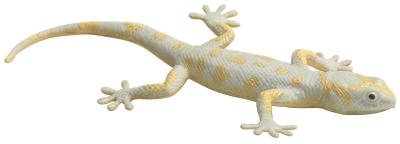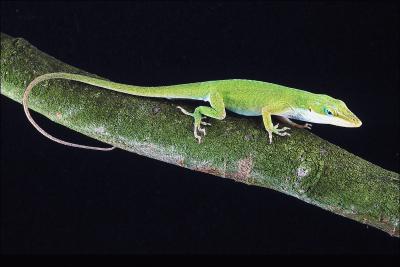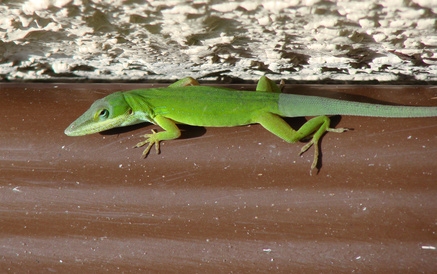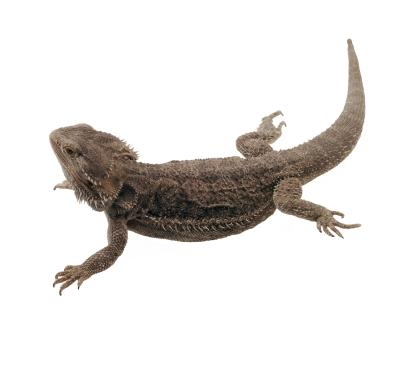
How to Raise a Wild Lizard. There is little physically different from raising a lizard purchased from a pet store than one found in the wild. Mentally, the two are completely different. A pet store lizard has never been outside of a cage and is acclimated to humans. Wild lizards know freedom and run away when humans come around. Learning to take care of a wild lizard requires kid gloves and patience until it becomes accustomed to living in a cage and treating you as its master.

Simulate the lizard's natural environment by adding twigs and rocks on top of the aquarium bedding. Use an aquarium and not a cage or else the lizard may slip through the bars. Place the lid on the aquarium tightly, so the lizard can't climb out of the aquarium. It may hide under the bedding and you may not see much it of it for the first few weeks. The aquarium size depends on the size of the lizard. According to drsfostersmith.com, the length should be a minimum of 2 to 3 times the lizard's snout to tail length, depth of 1 to 1.5 snout to tail length and height of 1 to 1.5 times its snout to tail length.
Feed it the food that it would naturally find in the wild. Contact a local pet store or veterinarian to find the proper food for the lizard, as different lizards eat different foods. Feeding it native food helps acclimate it to captivity. Spend time with it every day. Talk to it through the aquarium and let it get used to seeing a person every day. Water it daily using something that looks like part of the natural habitat, such as a rock with a depression for water or a water dish that looks like a rock.
Keep an eye on it to make sure it's eating regularly and going to the bathroom. A lizard taken from the wild may not eat initially, so watching its food levels and feces is an easy way to tell. Take the lizard to the veterinarian to make sure it doesn't have any diseases and there are not any red health flags.
Mix in some store-bought lizards with the wild lizard if you want to have several in an aquarium. This gets the wild lizard socialized and helps it get used to captivity. Don't be surprised if it takes a few weeks or longer for the wild lizard to stop trying to escape or run away from you. The lizards don't have to be the same species, but ask a pet store or veterinarian if the companion species you plan to buy is too aggressive.
 How to Raise a Wild Lizard
How to Raise a Wild Lizard
How to Rais
How to Raise a Wild Lizard
How to Raise a Wild Lizard
How to Rais
 How to Take Care of a Florida Lizard
How to Take Care of a Florida Lizard
H
How to Take Care of a Florida Lizard
How to Take Care of a Florida Lizard
H
 Green Anole Lizard Facts
Green Anole Lizard Facts
Green Anole L
Green Anole Lizard Facts
Green Anole Lizard Facts
Green Anole L
 How to Identify Female and Male Anoles
How to Identify Female and Male Anoles
How to Identify Female and Male Anoles
How to Identify Female and Male Anoles
 How to Tell the Sex of Your Lizard
How to Tell the Sex of Your Lizard
How
How to Tell the Sex of Your Lizard
How to Tell the Sex of Your Lizard
How
Copyright © 2005-2016 Pet Information All Rights Reserved
Contact us: www162date@outlook.com